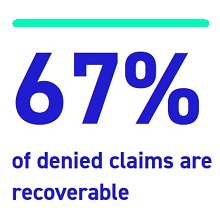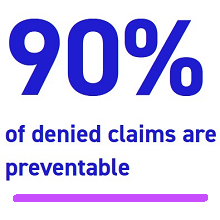Clinical Validation Appeal RoadmapPosted on June 17, 2020 Once a determination is made that a clinical validation (CV) appeal is warranted, the writer should make it as easy as possible for the reviewer to conclude that the provider’s diagnosis is clinically supported. One way is the creation of a “roadmap” for the reviewer. Here is an example of a basic yet effective roadmap for CV appeals.
Let’s look at each component of this roadmap. Show WHERE the diagnosis is documented. We want the reviewer to be able to find the source information quickly. If the diagnosis is not documented, that is a hard stop. The denial cannot be successfully appealed. In a perfect scenario, the best practice is showing the documentation of the diagnosis:
Support WHY the diagnosis was made. We want the reviewer to understand WHY the diagnosis was made, on a clinical basis, for the particular patient. Scrutinize the medical record for documentation that explains why the diagnosis was made. Identify actual verbiage by providers, and also signs, symptoms, lab, or radiological findings, treatment required, and response to treatment. Check nursing notes, flow sheets, respiratory/physical/speech therapy notes, and any pertinent prehospital information. Present just a bit of CODING rationale Why do we want coding information in a CV appeal? Experience taught us that demonstration of how a diagnosis met the criteria of principal diagnosis or a reportable diagnosis helped increase our success rate. If there are specific Coding Clinics that help support the argument, use them, too! Use applicable clinical MEDICAL SOURCES to back up your arguments We want the reviewer to understand the clinical basis for the decision to make the diagnosis. Peer-reviewed journal articles and textbooks make excellent sources of information. Be sure the information was current at the time the patient was in the hospital, and cite your sources appropriately. Check the reviewer’s SOURCES. Often, reviewers list sources that are inappropriate for the situation. Consider if a pediatric textbook is a good source to deny a COPD exacerbation on a 92-year-old patient. Is an article on postpartum hemorrhage appropriate to deny acute blood loss anemia in a 50-year-old man? Is clinical information found in Coding Clinics acceptable to deny a diagnosis on a clinical basis? Point out such references and inaccuracies in your appeal letter. NEVER ASSUME that the reasons for the denial are correct. It is not unusual for the reviewer’s rationale to be misleading, incomplete, or just plain wrong. Rebut any inaccurate statements made by the reviewer. Let’s put it all together. Narratives are traditionally utilized, but tables can improve clarity and save time. A combination of both can be used. Here is an abbreviated example of how the above suggestions might be utilized in the body of a CV appeal letter.
Vital Signs/Measurements
Laboratory
Radiology
Justification for Appeal The justification for appeal is a great place to write a narrative and bring all the clinical information together for the reviewer. It is also an excellent place to make arguments about why the reviewer’s rationale was incorrect. Coding References If the denied diagnosis is a principal diagnosis, enter the definition of a principal diagnosis here. If the denied diagnosis is a secondary diagnosis, put the criteria for a reportable diagnosis here, and explain how at least one criterion was met. Diagnostic and Evidence Based Clinical References
Selected Coding Clinics
|




